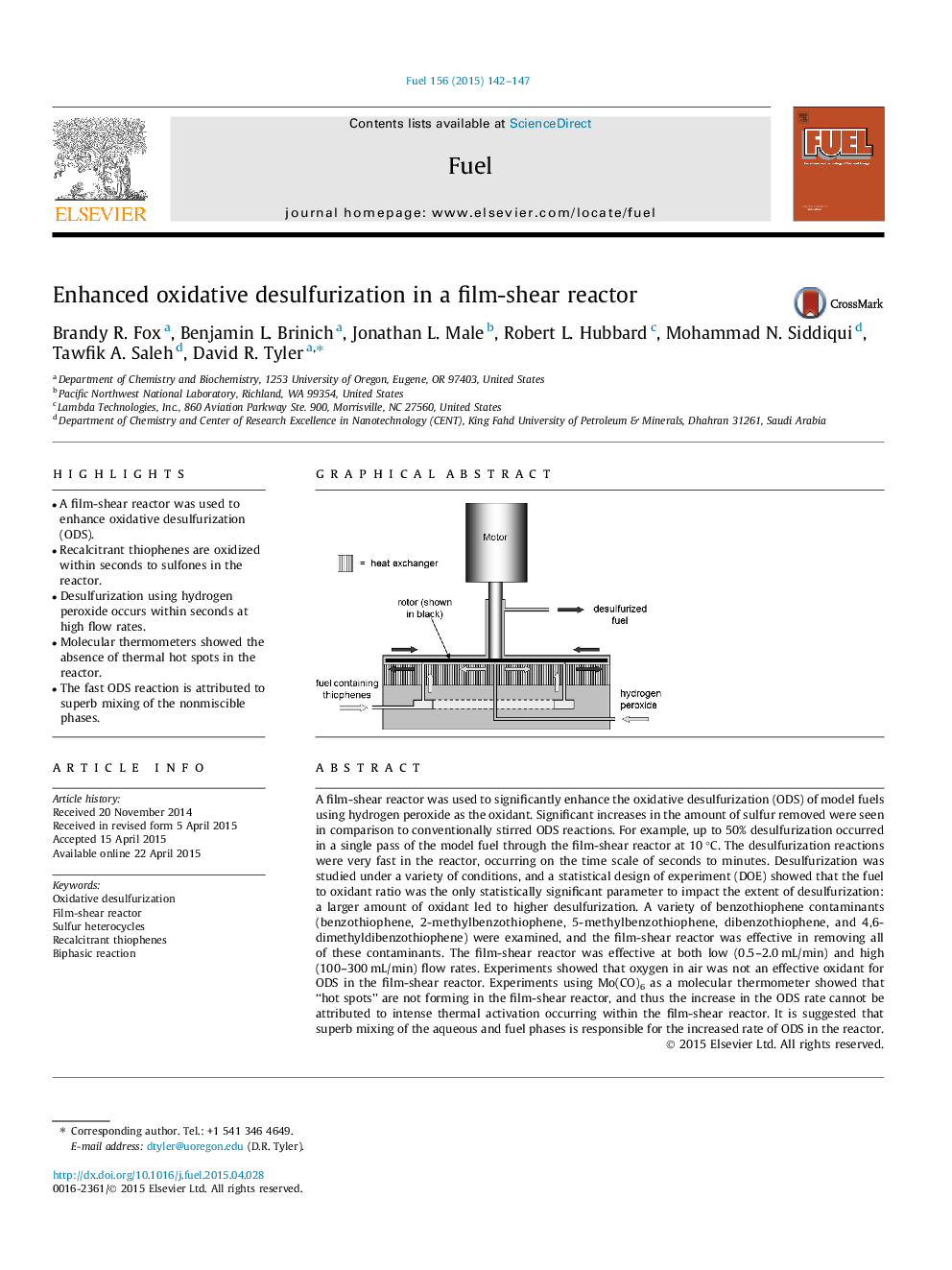| کد مقاله | کد نشریه | سال انتشار | مقاله انگلیسی | نسخه تمام متن |
|---|---|---|---|---|
| 205644 | 461121 | 2015 | 6 صفحه PDF | دانلود رایگان |
• A film-shear reactor was used to enhance oxidative desulfurization (ODS).
• Recalcitrant thiophenes are oxidized within seconds to sulfones in the reactor.
• Desulfurization using hydrogen peroxide occurs within seconds at high flow rates.
• Molecular thermometers showed the absence of thermal hot spots in the reactor.
• The fast ODS reaction is attributed to superb mixing of the nonmiscible phases.
A film-shear reactor was used to significantly enhance the oxidative desulfurization (ODS) of model fuels using hydrogen peroxide as the oxidant. Significant increases in the amount of sulfur removed were seen in comparison to conventionally stirred ODS reactions. For example, up to 50% desulfurization occurred in a single pass of the model fuel through the film-shear reactor at 10 °C. The desulfurization reactions were very fast in the reactor, occurring on the time scale of seconds to minutes. Desulfurization was studied under a variety of conditions, and a statistical design of experiment (DOE) showed that the fuel to oxidant ratio was the only statistically significant parameter to impact the extent of desulfurization: a larger amount of oxidant led to higher desulfurization. A variety of benzothiophene contaminants (benzothiophene, 2-methylbenzothiophene, 5-methylbenzothiophene, dibenzothiophene, and 4,6-dimethyldibenzothiophene) were examined, and the film-shear reactor was effective in removing all of these contaminants. The film-shear reactor was effective at both low (0.5–2.0 mL/min) and high (100–300 mL/min) flow rates. Experiments showed that oxygen in air was not an effective oxidant for ODS in the film-shear reactor. Experiments using Mo(CO)6 as a molecular thermometer showed that “hot spots” are not forming in the film-shear reactor, and thus the increase in the ODS rate cannot be attributed to intense thermal activation occurring within the film-shear reactor. It is suggested that superb mixing of the aqueous and fuel phases is responsible for the increased rate of ODS in the reactor.
Figure optionsDownload as PowerPoint slide
Journal: Fuel - Volume 156, 15 September 2015, Pages 142–147
